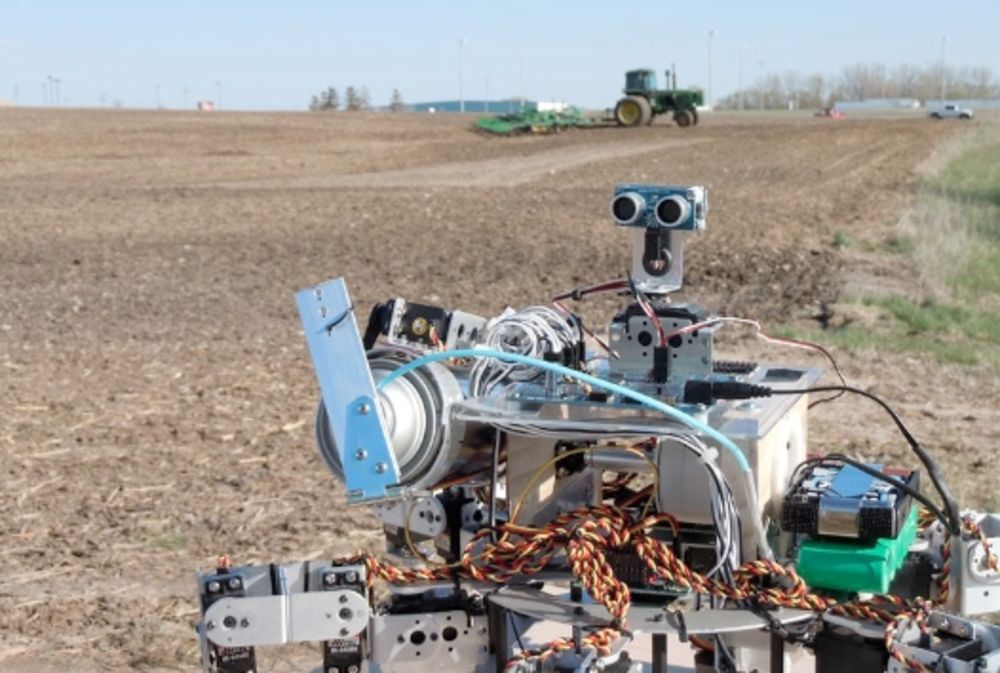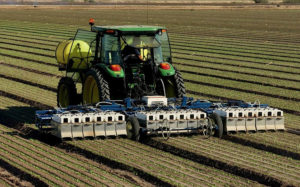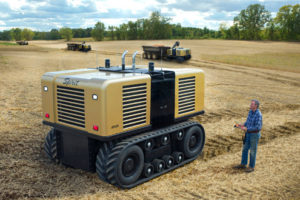Artificial Intelligence in Agriculture. Part 1: How Farming is Going Automated with Robots
AI • May 03,2016

Artificial Intelligence in Agriculture. Part 1: How Farming is Going Automated with Robots
The global population is expected to reach 9 billion people by 2050, which means double agricultural production in order to meet food demands. Farm enterprises require new and innovative technologies to face and overcome these challenges. Artificial intelligence robotics is one of these technologies that promises to provide a solution. An increasing number of farmbots are being developed that are capable of complex tasks that have not been possible with the large-scale agricultural machinery in the past. Here’s a list of real use cases of robots that will help agriculture changing.
Crop-spraying drone

Agriculture is considered a prime area of potential growth in the drone industry because of the technology’s ability to help survey crops and gather real-time information on farmland. Crop-spraying drones or easy-to-fly devices that are designed to spray pesticides on crops, can also capture high resolution images of whole field for further analysis. Effect of crop-spraying drone usage is massive. Drones can take off and land vertically which means unmanned aerial vehicle (UAV) sprayer does not need a runway. They are suitable for all kinds of complex terrain, crops and plantations of varying heights. In addition, crop-spraying can be controlled in any sight of distance range due to ability to fly at low altitude of several meters. Precise and accurate crop spraying ensures the best coverage and application of fertilizers or pesticides on lands.
Prospero or the swarming farmbot

Prospero is a working prototype of an Autonomous Micro Planter (AMP) that uses a combination of swarm and game theory and is meant to be deployed as a group of autonomous robots that tend the crops and harvest them. Finally one robot that can plant, tend, and harvest autonomously transitioning from one phase to another. A swarm of small robots like Prospero would have the ability to farm inch by inch, examining the soil before planting each seed and choosing the best variety for that spot. This would maximize the productivity of each acre, allow less land to be converted to farm land, feed more people, and provide a higher standard of living for those people because they would spend less on food.
Strawberry harvesting robot

Labor shortage spurs farmers to use robots for handling delicate tasks in the fresh-produce industry, writes The Wall Street Journal. Automated harvester wheeled through rows of strawberry plants, illustrating an emerging solution to one of the produce industry’s most pressing problems: a shortfall of farmhands. Increased mechanization of the fresh-produce industry boosts productivity, ultimately helping to tamp down price growth. It also help farmers, who are struggling with a yearlong drought in the country’s largest produce state, get more from their fields, offsetting higher costs. In addition, this system allows to avoid the labor shortages, existing in many developed and developing countries.
Lettuce-thinning robot

A lettuce-thinning robot, designed by Californian company Blue River Technology and currently being used by eight customers in different parts of the USA, is used for the thinning and weeding of lettuce to increase yield. Its vision system scrutinizes each plant and then applies advanced artificial intelligence algorithms that make plant-by-plant decisions to optimize yield and then eliminate unwanted plants according to its programming. Precision lettuce-thinning can characterise every plot by counting plants and plant spacing, building canopy height distributions, and measuring key physiological parameters, generate tabulate data and statistics for each plot and build plot image library that contains all images and plot reconstructions from every plot.
Driverless tractor

Driverless tractors are getting closer to farmlands. Companies in an arey of industries are developing variations of driverless tractors that would turn a century-old machines over to robots and free farmers to do other work without having to hire someone to take their place. Using ever-more sophisticated software coupled with off-the-shelf technology including sensors, radar, and GPS, the system allows an operator working a combine to set the course of a driverless tractor pulling a grain cart, position the cart to receive the grain from the combine, and then send the fully loaded cart to be unloaded. Autonomous harvesters and planters may possibly overcome the problem of an inadequate supply of skilled labor during planting and harvesting, allow more acreage to be worked for longer time periods, demonstrate higher efficiency for precision agriculture and could prove more economical, especially if they work continuously.
Hortibot or weeding robot

Danish agricultural engineers have built a robot to help farmers with weeds – Hortibot. The Hortibot is about 3-foot-by-3-foot, is self-propelled, and uses global positioning system (GPS). It can recognize 25 different kinds of weeds and eliminate them by using its weed-removing attachments. It’s eco-friendly, because it sprays exactly above the weeds (it can reduce herbicide usage by 75 percent). As machine is light – between 200 and 300 kilograms – it won’t hurt soil behind it. It’s also cheaper than tools currently used for weed-elimination as it can work during extended periods of time.
The future of automated agriculture is here. While the fear of unemployment caused by robots may worry many citizens of cities and suburbs, in the country, at least, the ability to take over more and more farm work may prove a blessing. Artificial intelligence can fill the current manpower shortage and change the face of agriculture by increasing efficiency, reducing production costs of vegetables and fruits, minimizing environmental impacts and harvesting more.
Author: AI.Business
If you like our articles, please subscribe to our monthly newsletter:
[mc4wp_form id=”763″]